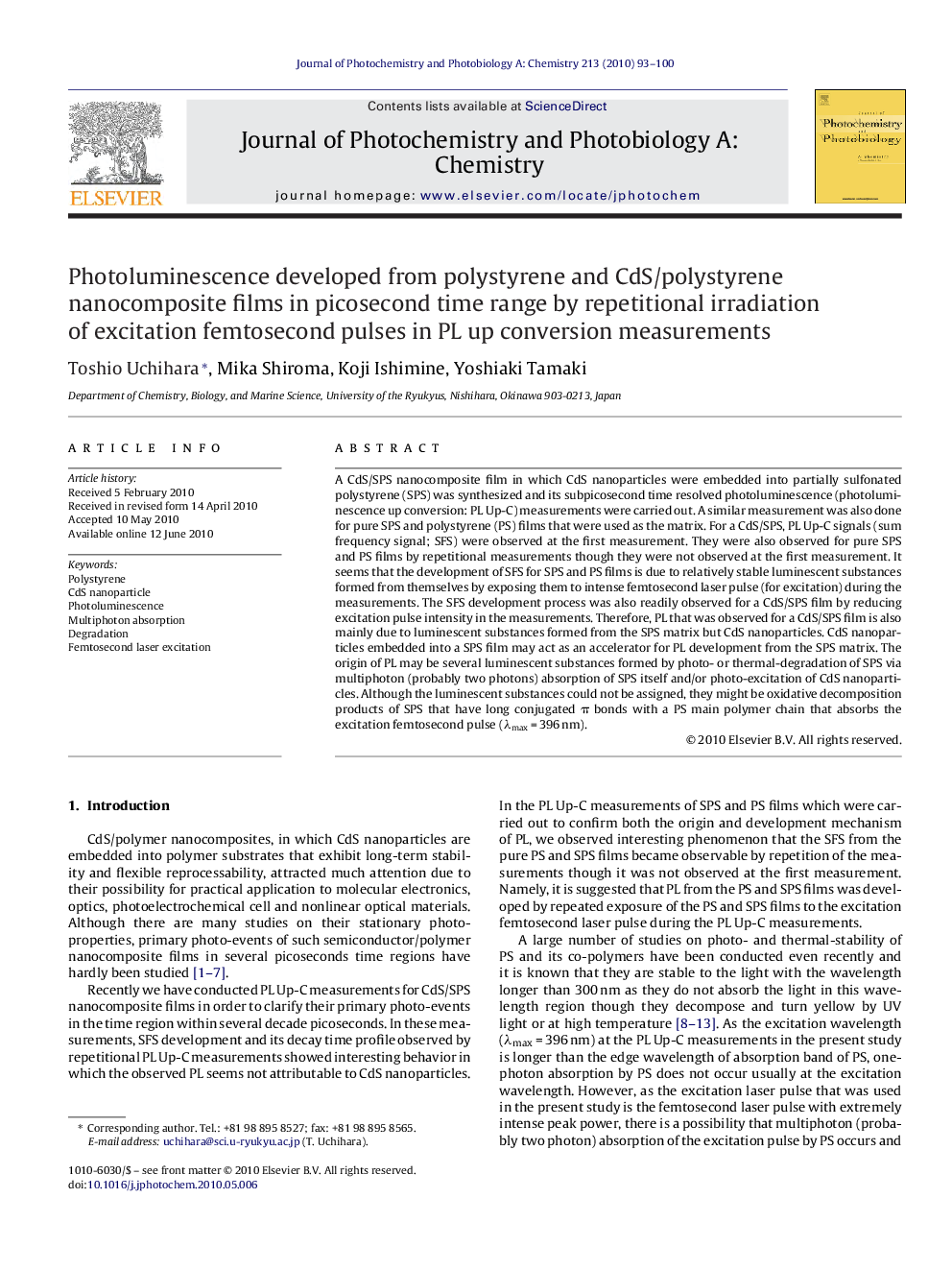| Article ID | Journal | Published Year | Pages | File Type |
|---|---|---|---|---|
| 27589 | Journal of Photochemistry and Photobiology A: Chemistry | 2010 | 8 Pages |
A CdS/SPS nanocomposite film in which CdS nanoparticles were embedded into partially sulfonated polystyrene (SPS) was synthesized and its subpicosecond time resolved photoluminescence (photoluminescence up conversion: PL Up-C) measurements were carried out. A similar measurement was also done for pure SPS and polystyrene (PS) films that were used as the matrix. For a CdS/SPS, PL Up-C signals (sum frequency signal; SFS) were observed at the first measurement. They were also observed for pure SPS and PS films by repetitional measurements though they were not observed at the first measurement. It seems that the development of SFS for SPS and PS films is due to relatively stable luminescent substances formed from themselves by exposing them to intense femtosecond laser pulse (for excitation) during the measurements. The SFS development process was also readily observed for a CdS/SPS film by reducing excitation pulse intensity in the measurements. Therefore, PL that was observed for a CdS/SPS film is also mainly due to luminescent substances formed from the SPS matrix but CdS nanoparticles. CdS nanoparticles embedded into a SPS film may act as an accelerator for PL development from the SPS matrix. The origin of PL may be several luminescent substances formed by photo- or thermal-degradation of SPS via multiphoton (probably two photons) absorption of SPS itself and/or photo-excitation of CdS nanoparticles. Although the luminescent substances could not be assigned, they might be oxidative decomposition products of SPS that have long conjugated π bonds with a PS main polymer chain that absorbs the excitation femtosecond pulse (λmax = 396 nm).
